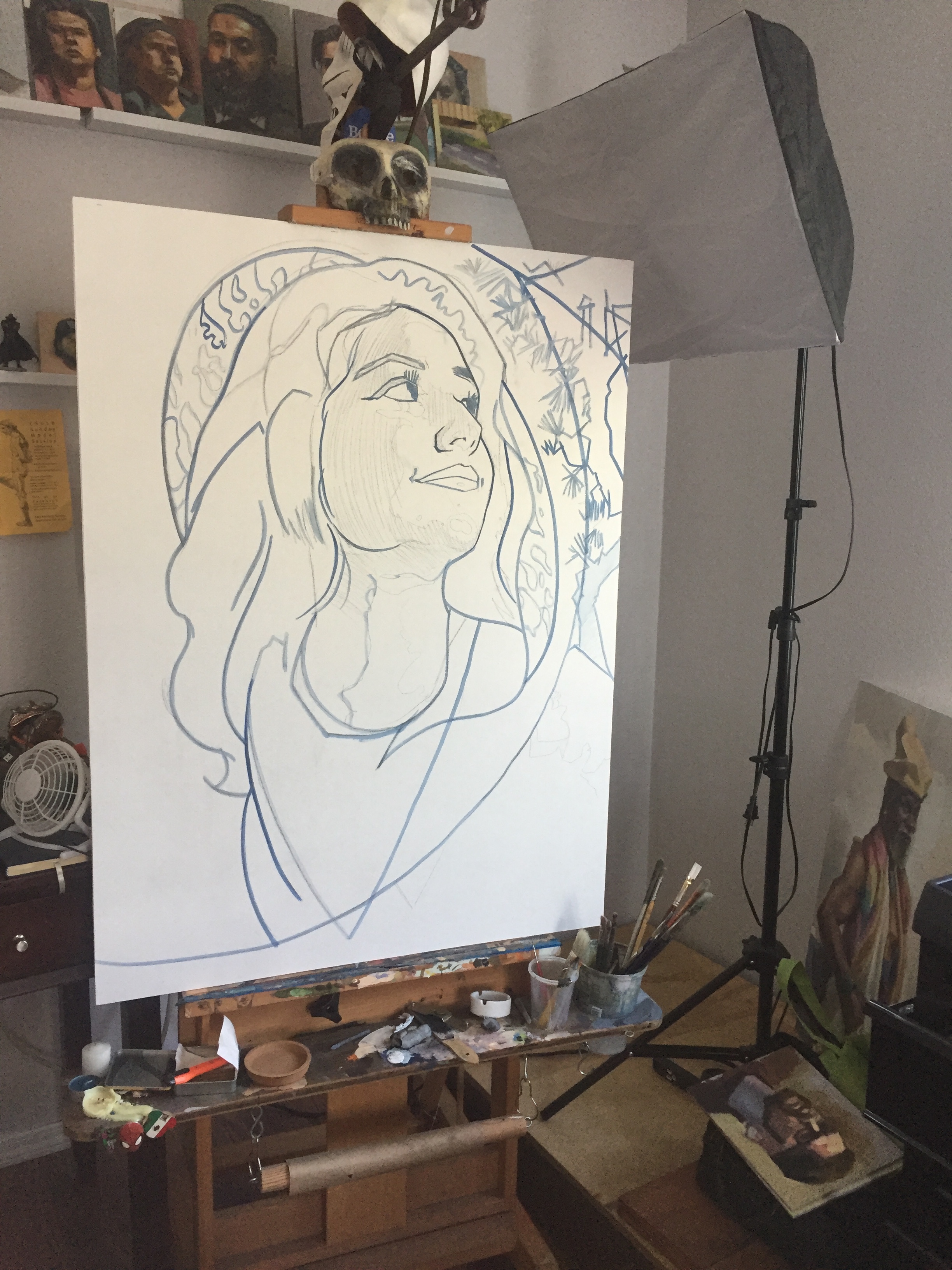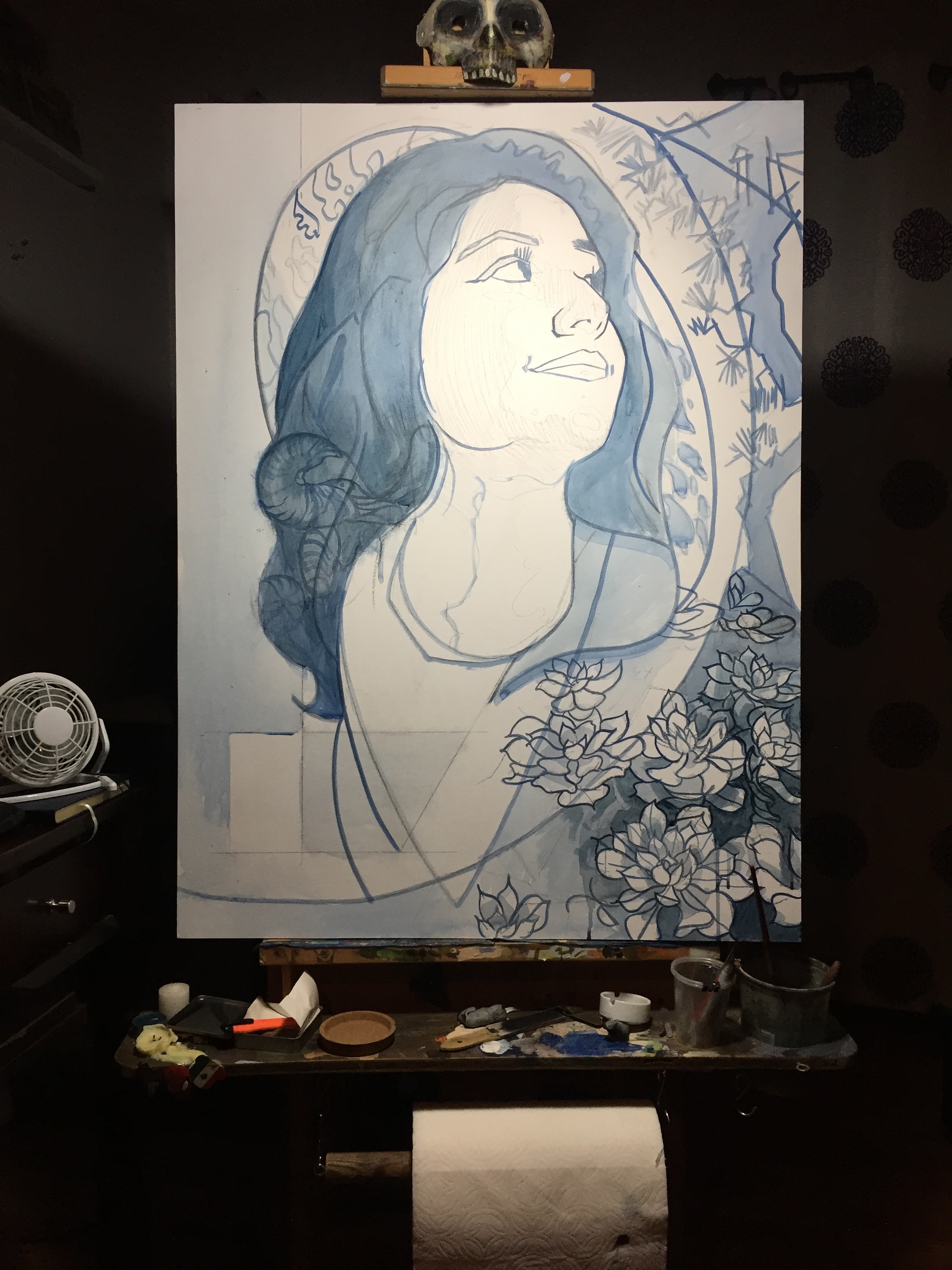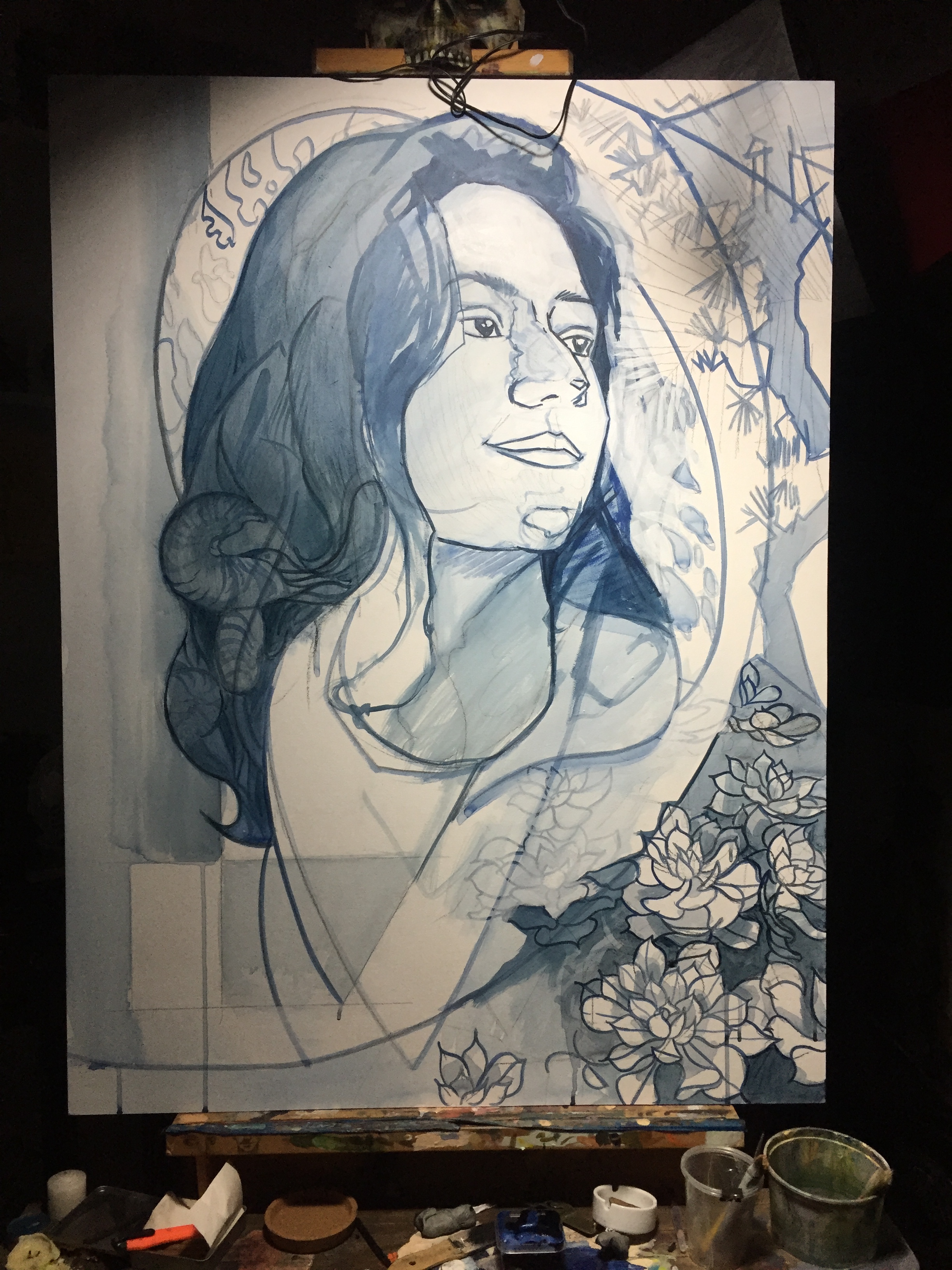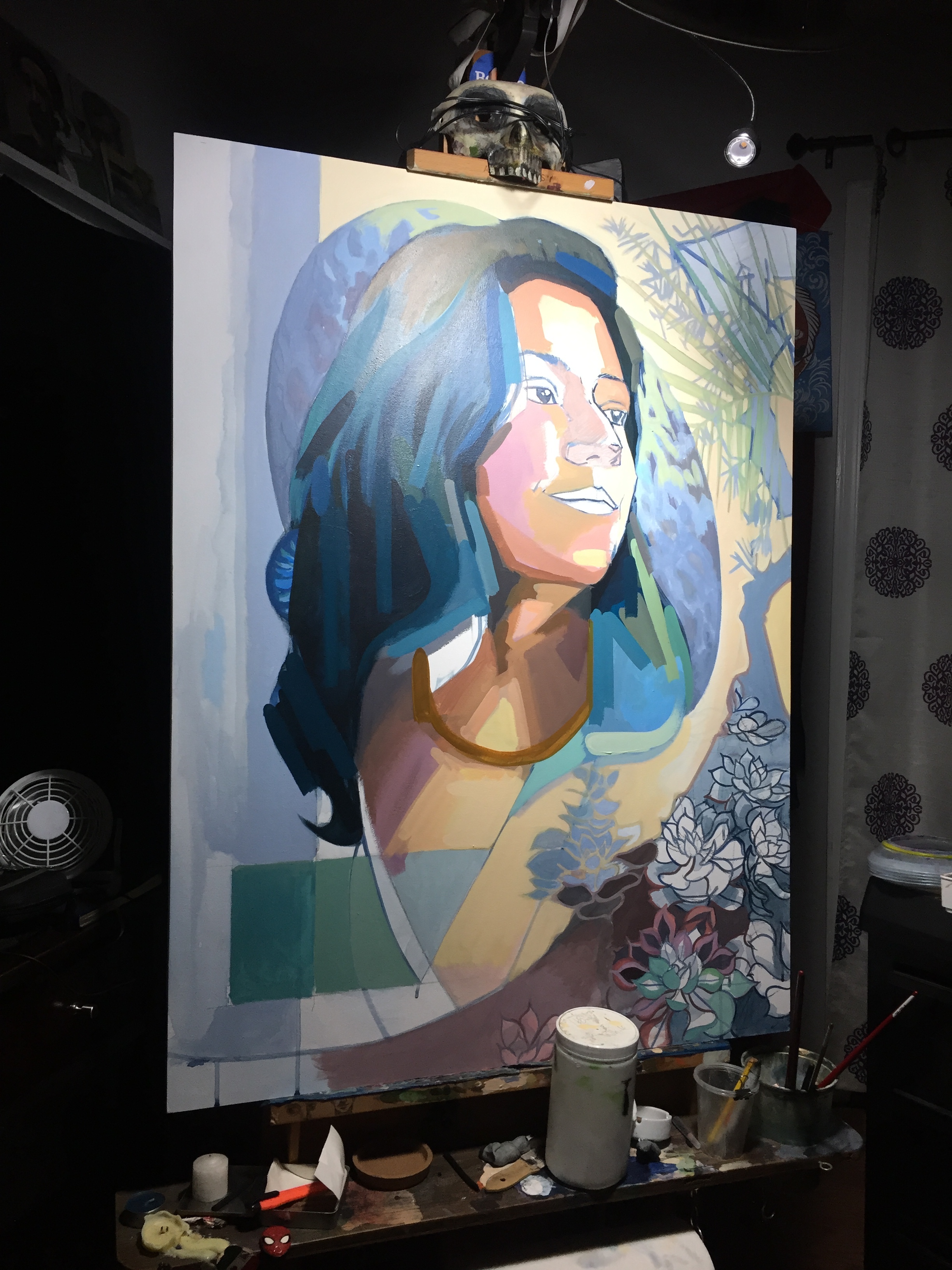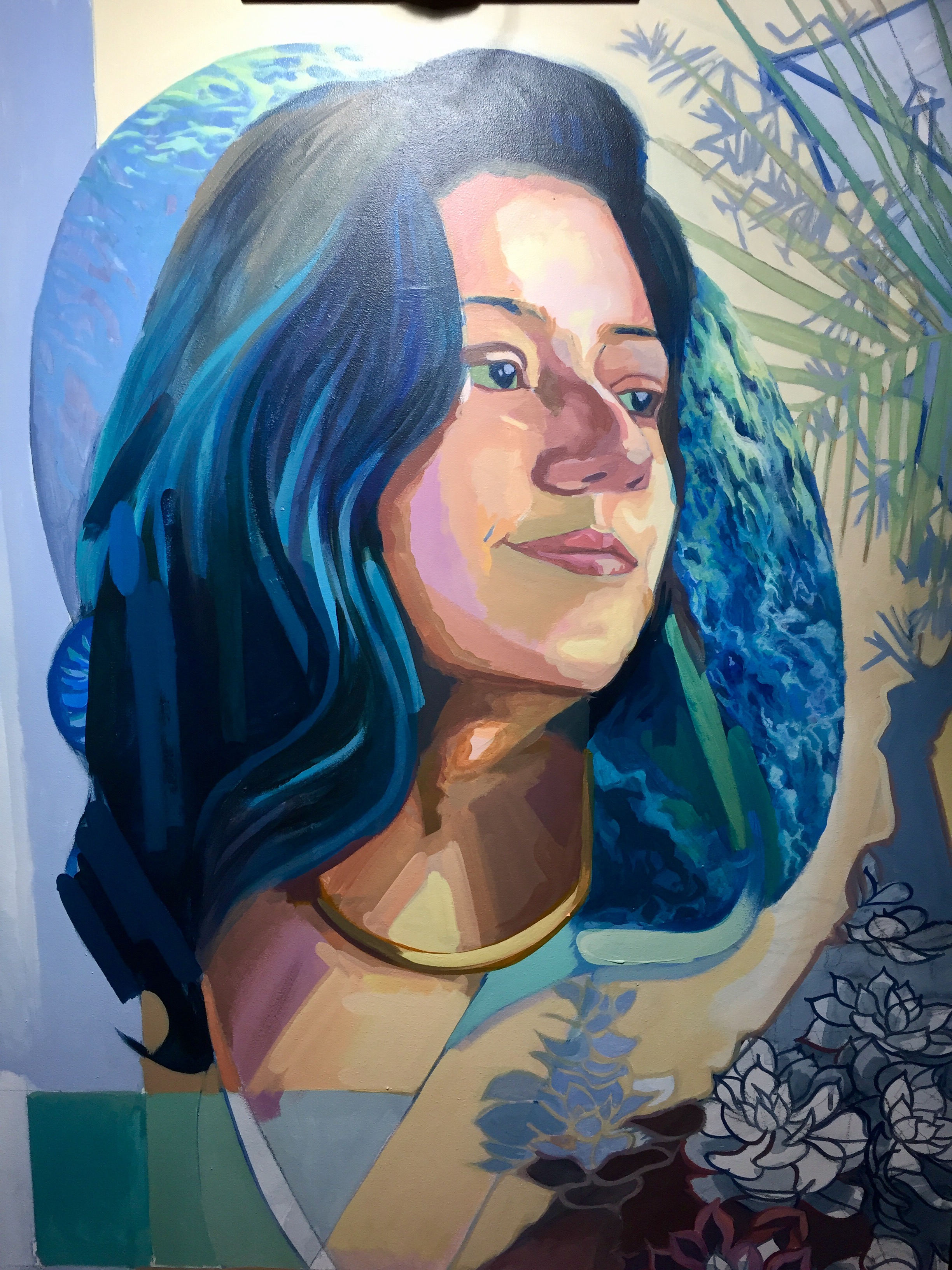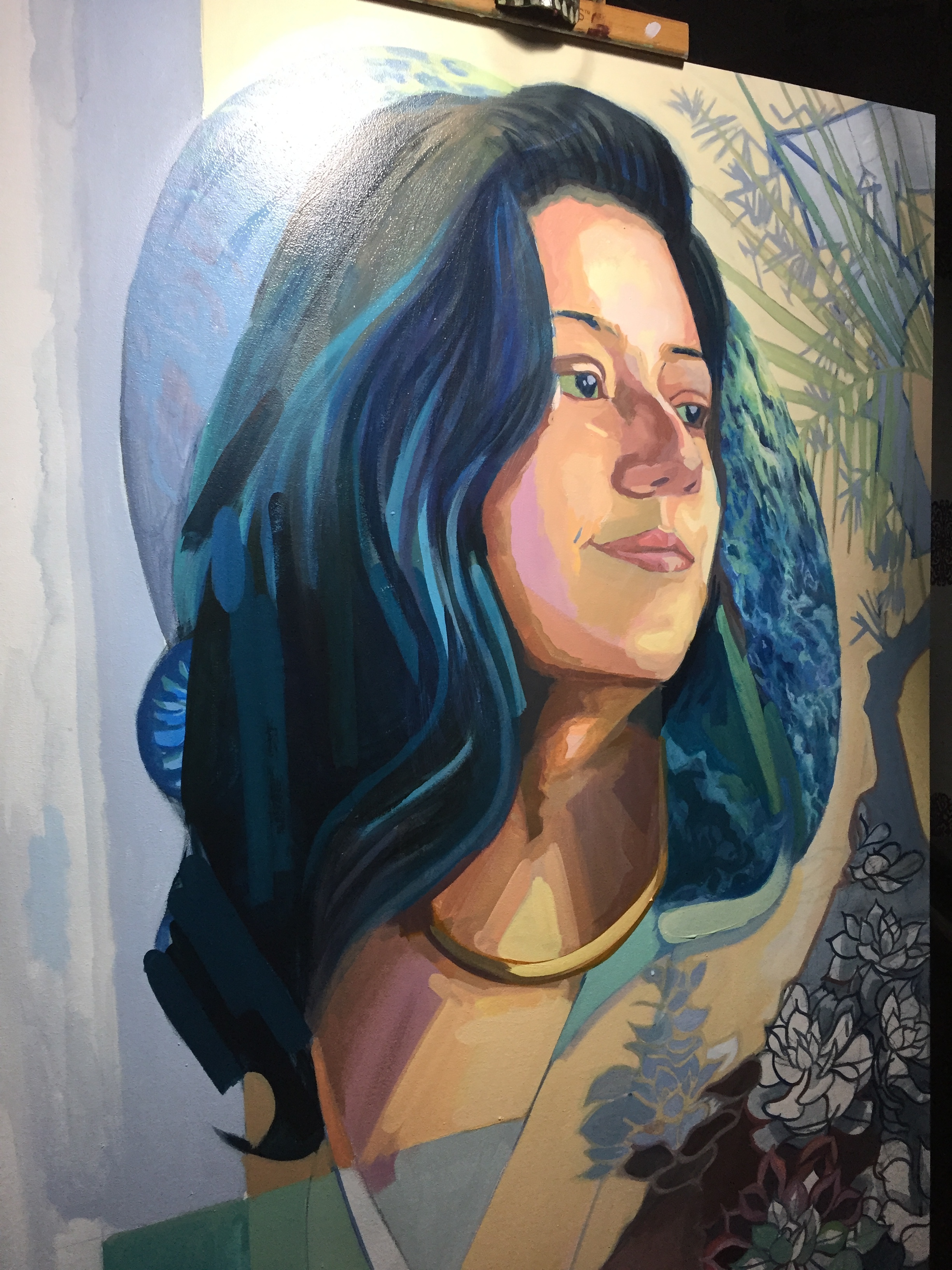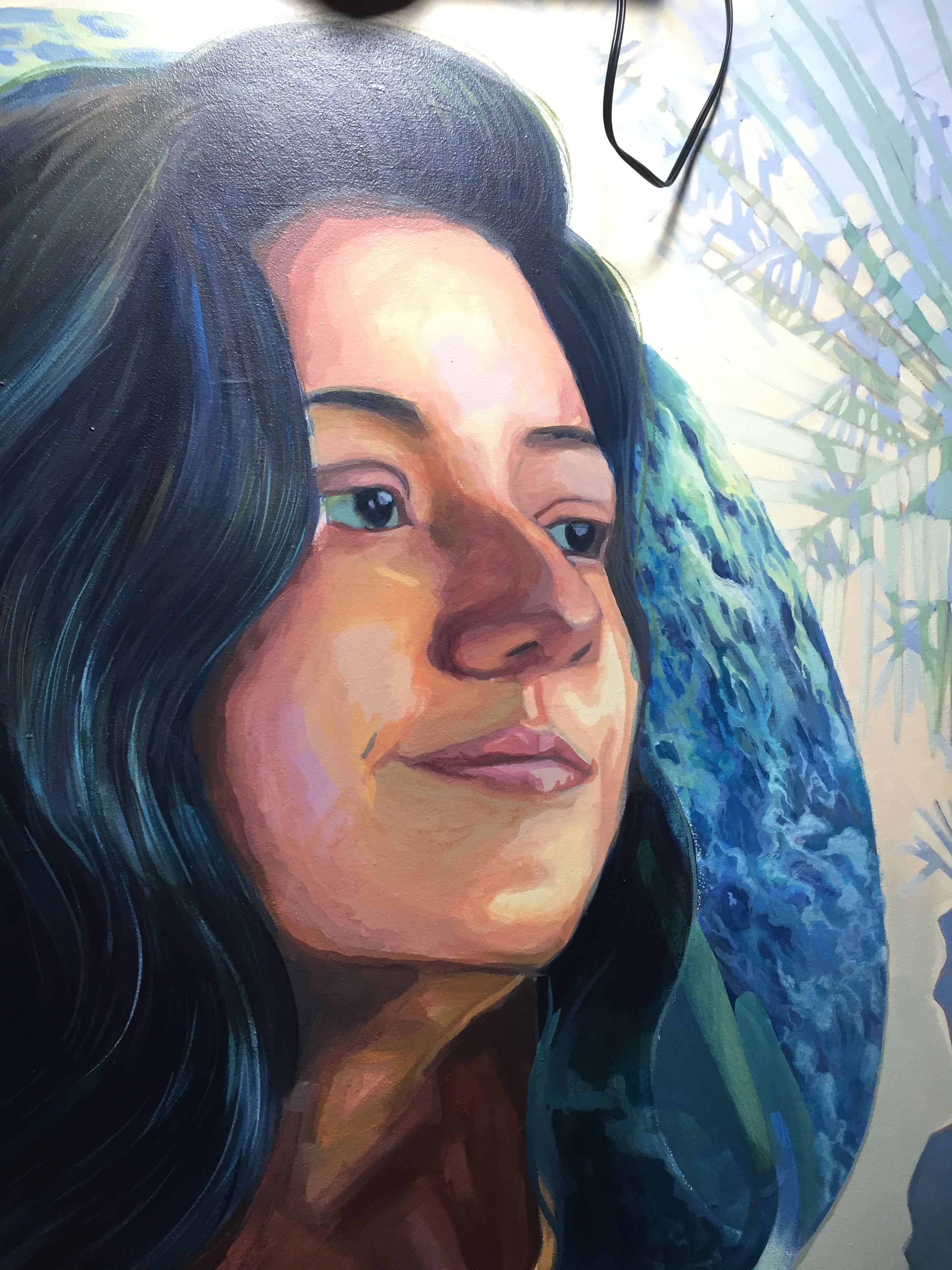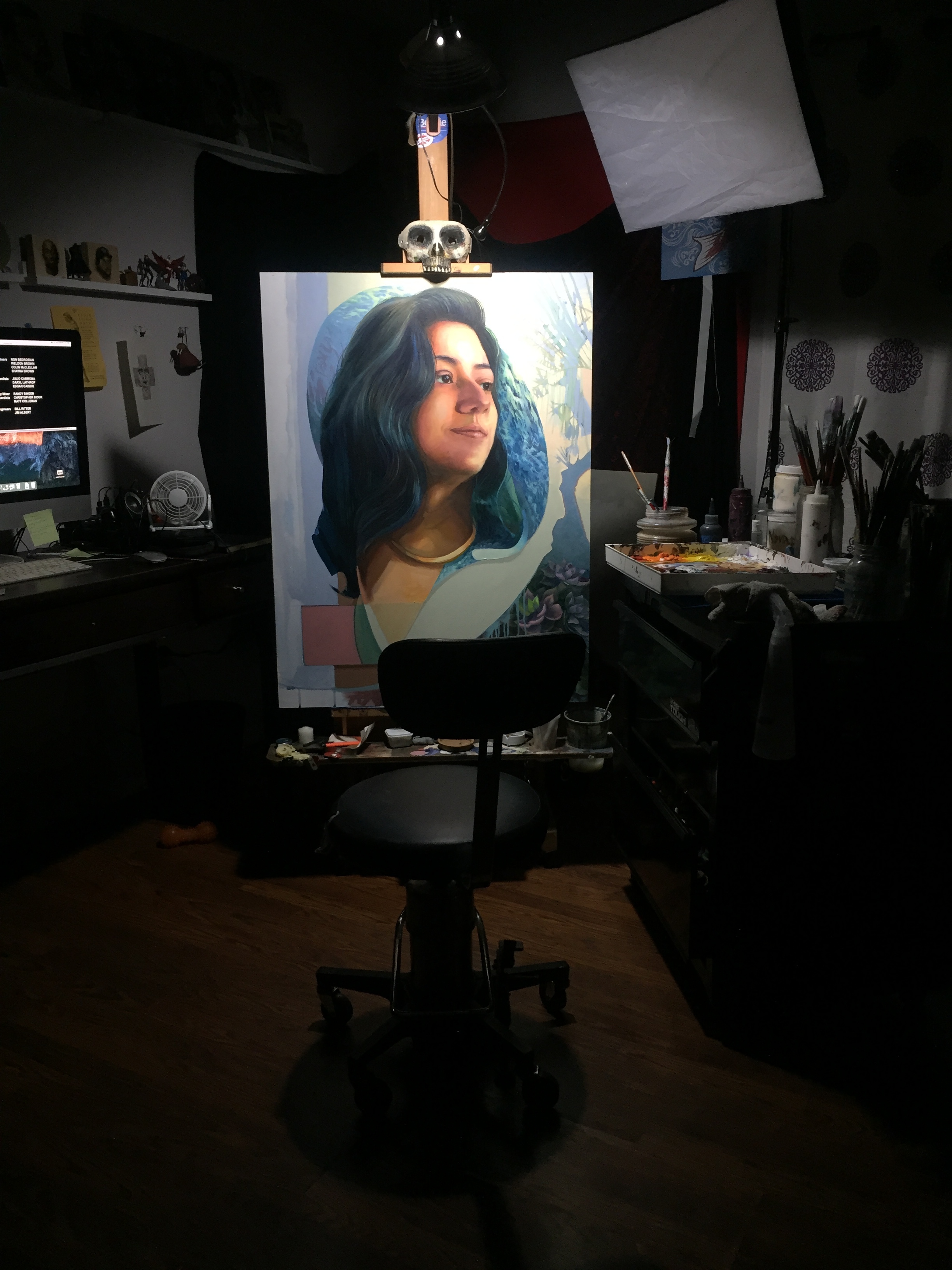AZUL, Acrylic Portrait Progress
Working on a recent commission I was able to document the process a little more in depth than other projects. The portrait was painted on a gessoed cradled wood panel, size 30" x 40" and was commissioned by a collector as gift for his daughter.
The client has been kind enough to let me display the finished work this Friday at the Bixby Knolls First Friday's Artwalk inside the Expo Arts Center. 4321 Atlantic Ave. Long Beach,CA 90807. I will be there also selling some prints and art related merchandise 630-930pm.
The supplemental reference material for the painting consisted of images I have collected along the way, the waves and succulents. While painting the portrait, I relied on photo references and a live painting session. Arranging photoshoots for reference photos are really important to my process of painting because it allows complete control of the lighting conditions and poses. Most of the time the subject may not be available to sit for the entirety of the painting process and photo references are the next best thing. This is less work editing in photoshop afterwards.
Photo Shoot
I fit in my photo references into my sketch composition so I can draw in all the details. Once that part is done I can move on to color.
SKETCH
These days I scan or photograph my sketches and work on them digitally. It is a lot quicker to try several color comps and work out the right one.
I transfer the image onto the panel and draw it in with graphite while later tracing my lines with a watered down paynes gray. The outline with paynes gray is mostly a habit from mural painting, probably a step you can skip.
ACYLIC PAINT
One of the first steps I like to get out of the way is to lay down some basic values and colors. At this stage I am not worried too much about getting the color perfect but would rather get paint covering the canvas and arranging the value scale.
I continue the block in and slowly start to resolve some color issues while deciding what process occurrences I would want to keep (cool mistakes).
While blocking in the large areas I make sure to make enough paint for touch ups and have enough paint for coverage.
Once the large areas and block in then the detail work can begin!
Everyone who has worked with acrylics knows that it drys very quickly especially in the Southern California Summer Weather. I make are to pour generous amounts of paint on my palette. Side note- My palette is a sealable palette and allows me to take breaks without my paint drying out. I also carry a spray bottle to lightly spray my palette to keep it from drying over.
I work in small sections at a time using a combination of glazing, wet on wet mixing, and dry brushing. There is a section on my palette where I pour a bit of medium to use with glazing the paint mixes. I like to work section at a time in stages of several layers while painting a layer of matt medium in between layers. This gives it a bit more depth as I add a couple micrometers of medium in between glazes.
TIME Lapse Of The Painting Process


